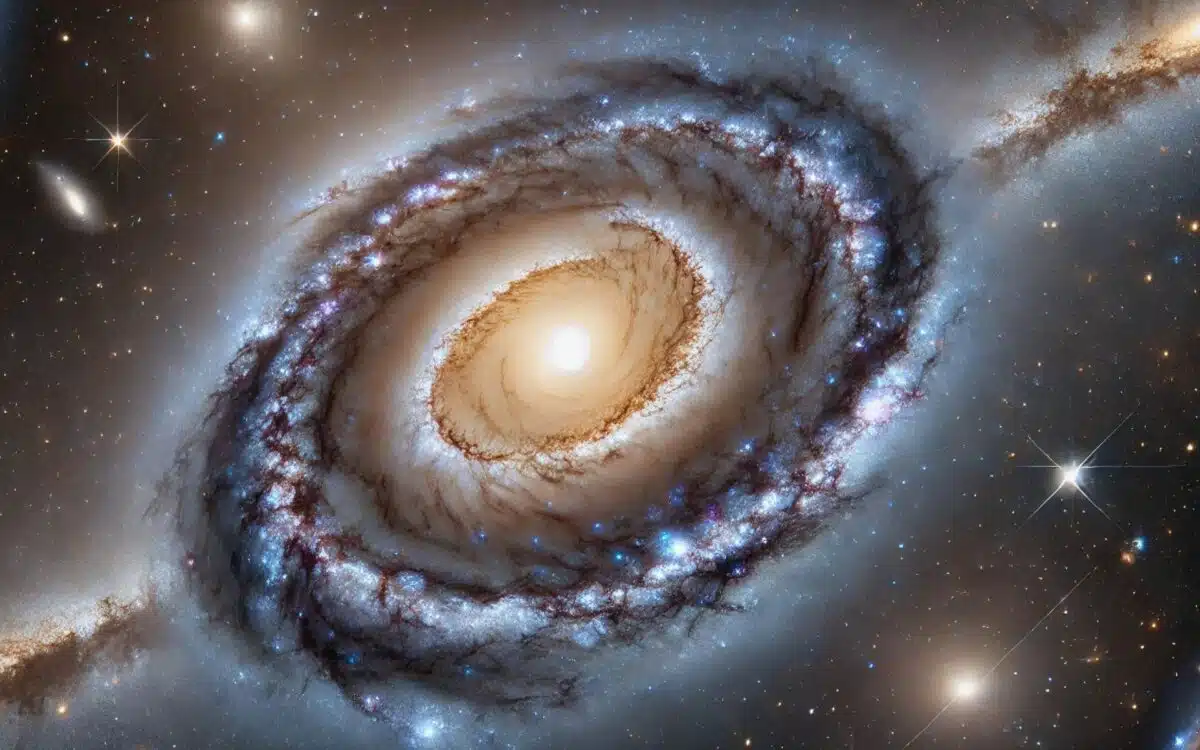
Arezki Amiri Published on November 5, 2024
Collected at: https://dailygalaxy.com/2024/11/neutron-stars-detecting-dark-matter-clouds/
Dark matter, an enigma that composes around 85% of the universe‘s matter, has eluded direct observation for decades. But a recent study suggests that neutron stars might provide the perfect laboratory for unlocking this cosmic mystery.
Axions: The Soap-Like Particles That Could Explain Dark Matter
The search for dark matter has led scientists to consider a peculiar particle known as the axion. Hypothesized in the 1970s to solve a puzzle in the Standard Model of particle physics, axions are extremely lightweight and interact weakly with other matter.
Their elusive nature makes them nearly impossible to detect directly, yet they hold promise as a potential explanation for dark matter. Scientists even drew inspiration from a cleaning product for the name “axion,” hoping these particles could “clean up” the inconsistencies in our understanding of the universe.
Axions have gained renewed interest because of their properties, which align suspiciously well with what dark matter needs to be: invisible and barely interactive. If they exist, they could account for the gravitational effects attributed to dark matter, from holding galaxies together to shaping the large-scale structure of the universe.

Neutron Stars: The Universe’s Extreme Particle Traps
Enter neutron stars: the remnants of massive stars that have exploded as supernovae. These objects are some of the densest in the universe, cramming the mass of 1.4 suns into a ball only about 12–25 miles across.
They’re also endowed with some of the most intense magnetic fields ever observed, billions of times stronger than anything on Earth.
Why does this matter for dark matter? According to a team of researchers from the universities of Amsterdam, Princeton, and Oxford, neutron stars may provide a unique environment for detecting axions.
In their latest study, published in Physical Review X on October 17, 2024, they explain how neutron stars could trap axions and turn them into observable light signals.
Gravitational Traps for Axions
The October 2023 findings by the same team focused on detecting axions escaping from neutron stars. The new research shifts the focus to those axions that are unable to escape the star’s immense gravitational pull.
Neutron stars, with their overwhelming density and gravity, could accumulate clouds of these elusive particles over millions of years. While black holes could also collect axions, their gravity is so extreme that they’d absorb the particles entirely. Neutron stars, on the other hand, offer a more moderate gravitational force, allowing axions to collect without disappearing.
The result? Axions could form dense clouds around these stars, providing a rare opportunity for scientists to observe them.
Turning Axions Into Light
One intriguing feature of axions is that they’re theorized to convert into light particles when exposed to a strong magnetic field. Neutron stars, with their extraordinary magnetic strength, could facilitate this transformation. While the light from a single axion might be undetectable, an enormous accumulation could emit a signal bright enough for modern telescopes to pick up.
Researchers have proposed two primary ways to detect this light. First, it could appear as a continuous signal throughout a neutron star’s life, a persistent glow emanating from the star’s surface.
Alternatively, the axion cloud could produce a one-time burst of light at the end of the neutron star’s life cycle, a dazzling finale marking the star’s collapse.
What’s Next in the Search for Dark Matter?
So far, scientists haven’t yet observed these axion clouds. However, they are now equipped with a clearer idea of what to look for. The ability to detect axions would not only confirm the existence of these elusive particles but also represent a giant leap forward in solving multiple cosmic riddles.
Researchers are hopeful that this new approach will finally illuminate one of the universe’s darkest secrets. If successful, the implications would be monumental, reshaping our understanding of the cosmos and filling in one of the most perplexing gaps in astrophysics.

Leave a Reply